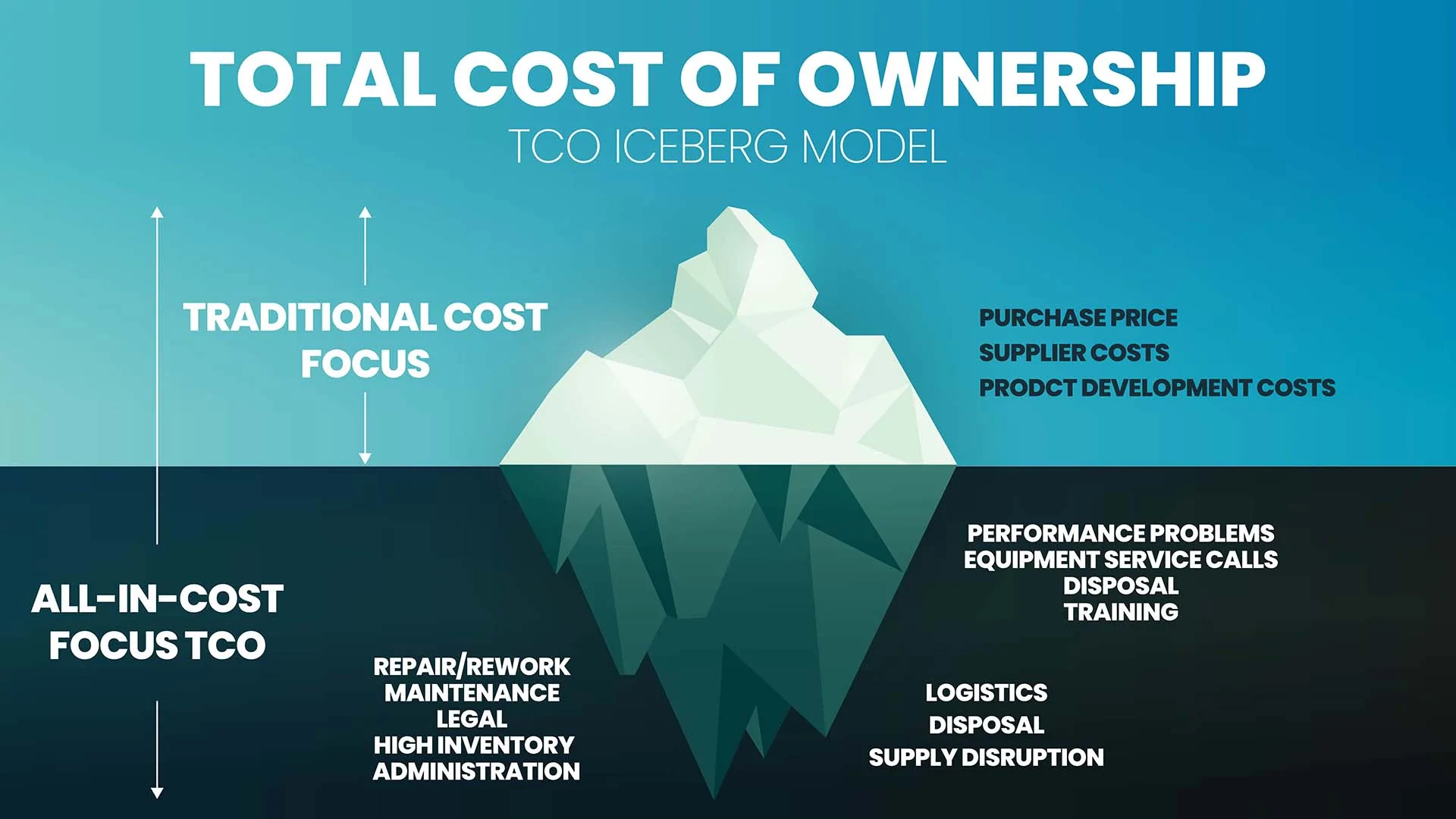Choosing a warehouse management system (WMS) is one of the most important decisions companies in the logistics and supply chain sector have to make. But with so many providers, features, and pricing models out there, the question quickly arises: How can you make an informed decision that will be successful in the long term?
A decisive factor lies in an often underestimated variable: the total cost of ownership (TCO) – i.e., the total costs incurred over the entire life cycle of a system. In this blog post, you will learn why TCO goes far beyond the initial purchase price, how to correctly evaluate this key figure, and why a well-planned WMS project not only transforms your processes but also strengthens your competitiveness.
What is Total Cost of Ownership (TCO) – and why is it so important?
TCO is a holistic cost analysis that includes not only the obvious license or one-time costs, but also many hidden factors:
- Implementation and customization costs
- Employee training costs
- Maintenance, support, and system updates
- Integration costs into existing IT systems
- Operating costs and necessary hardware
- Costs due to system failures or lack of scalability
In short: If you only look at the initial price of a WMS, you run the risk of incurring significantly higher costs in the long term. Learn more about our approach from the CxO-level of our project partners Breuninger and GRASS Bewegungs-Systeme.

A WMS is the backbone of your intralogistics
A modern, powerful WMS is the central control tool for all your intralogistics processes – from goods receipt and picking to shipping.
The right software solution helps you control material flows efficiently, optimize resource utilization, and minimize sources of error. The result: higher throughput, better delivery performance, and measurable cost advantages.
With the right WMS, you not only increase your productivity – you also secure the future viability of your supply chain.
Lower initial costs thanks to well thought-out project planning
Many companies underestimate how much proper project preparation influences later success – especially with regard to the TCO approach. Those who analyze processes holistically at the start of a project, involve stakeholders, and carefully plan the system architecture avoid expensive adjustments and delays later on.
Our recommendation:
Rely on an experience-based approach with clearly defined goals, practical process modeling, and iterative implementation. This will result in a WMS solution that is optimally tailored to your requirements from the outset – creating long-term added value.
Customized or standard? Your requirements determine the solution.
Many providers rely on so-called standard solutions, which initially adapt business processes to the software – not the other way around. This saves time, but often involves compromises.
Customized WMS solutions, on the other hand, offer the possibility to map your processes exactly, implement specific features and set yourself apart from the competition with intelligent functions. This can be the decisive competitive advantage, especially for medium-sized companies with complex or industry-specific requirements.
Our approach: Together with our customers, we develop flexible, scalable WMS solutions that are precisely tailored to their goals and processes – without any unnecessary baggage. Learn more.

Automation, AI, and robotics: The WMS trend of the future
Modern intralogistics is all about automation, artificial intelligence (AI), and robotics. In times of skilled labor shortages and growing cost pressure, it is becoming increasingly important to digitize processes and integrate machines efficiently.
Today, a future-proof WMS must be able to interact seamlessly with automated warehouse systems, materials handling technology, autonomous guided vehicles (AGVs), and smart data analytics. This is the only way to scale processes, reduce operating costs, and enable new business models.
Companies that rely on such technologies benefit from stable, transparent, and resilient supply chains – while significantly reducing their TCO.
Conclusion: TCO as a success factor for sustainable WMS decisions
A WMS is not a short-term project, but a long-term investment in efficiency, quality, and competitiveness. If you focus solely on price when making your selection, you risk high follow-up costs and missed opportunities.
Taking the total cost of ownership (TCO) into account helps you find a sustainable and future-proof solution for your requirements.
Our recommendation: Seek expert advice when selecting a WMS. We are happy to support you with our many years of experience and customized solutions.
Warehouse Management System
TUP.WMS - The warehouse management system for uncompromising efficiency